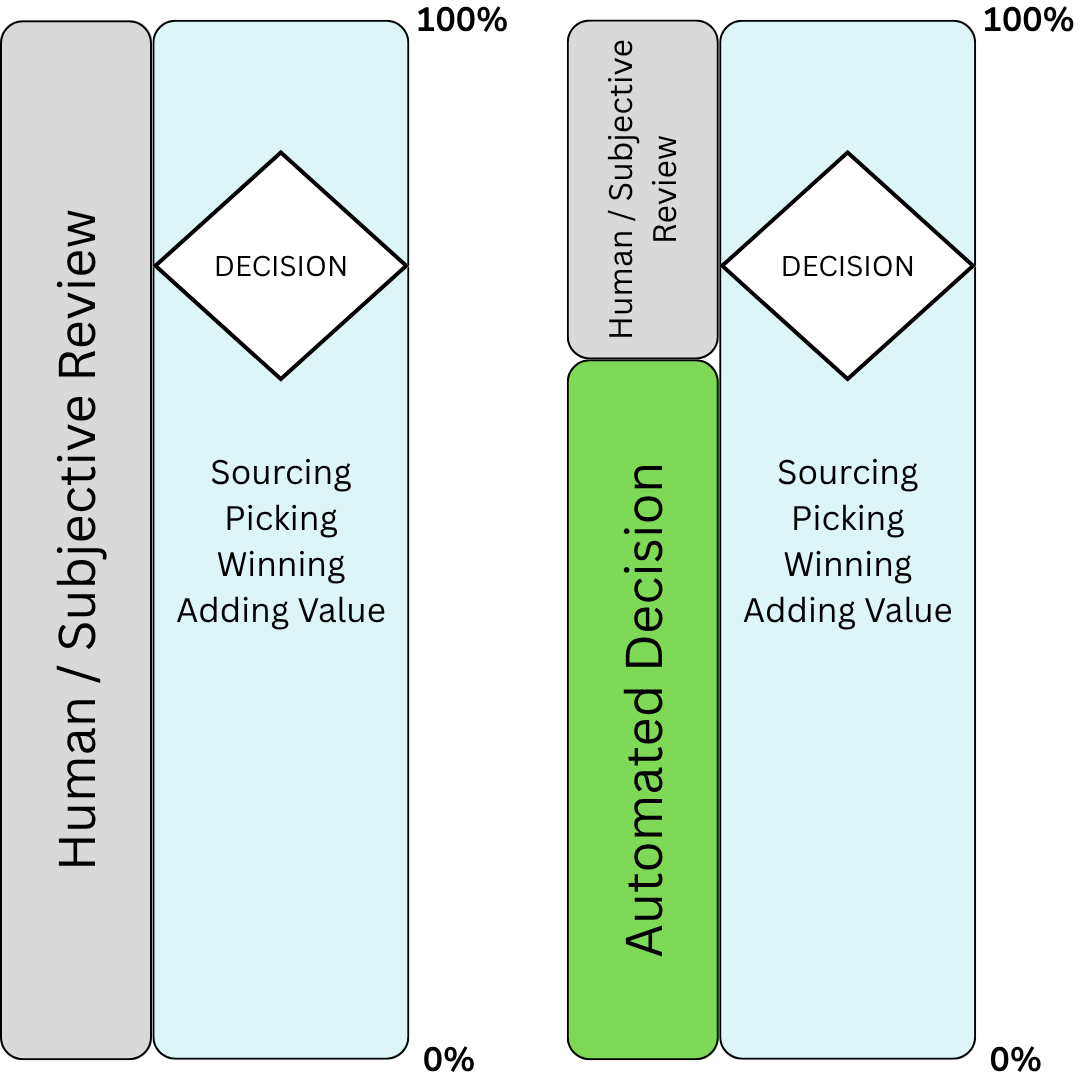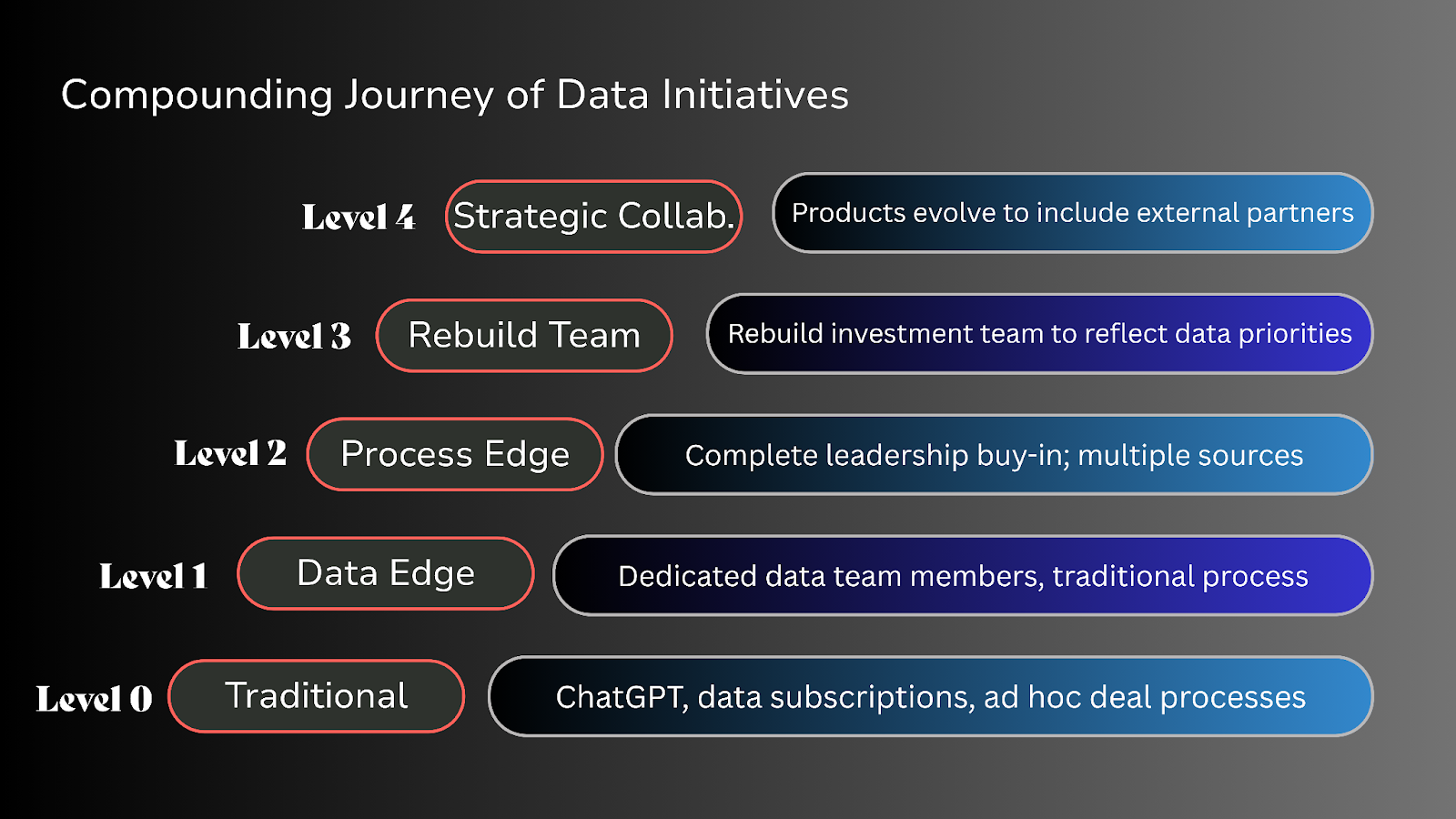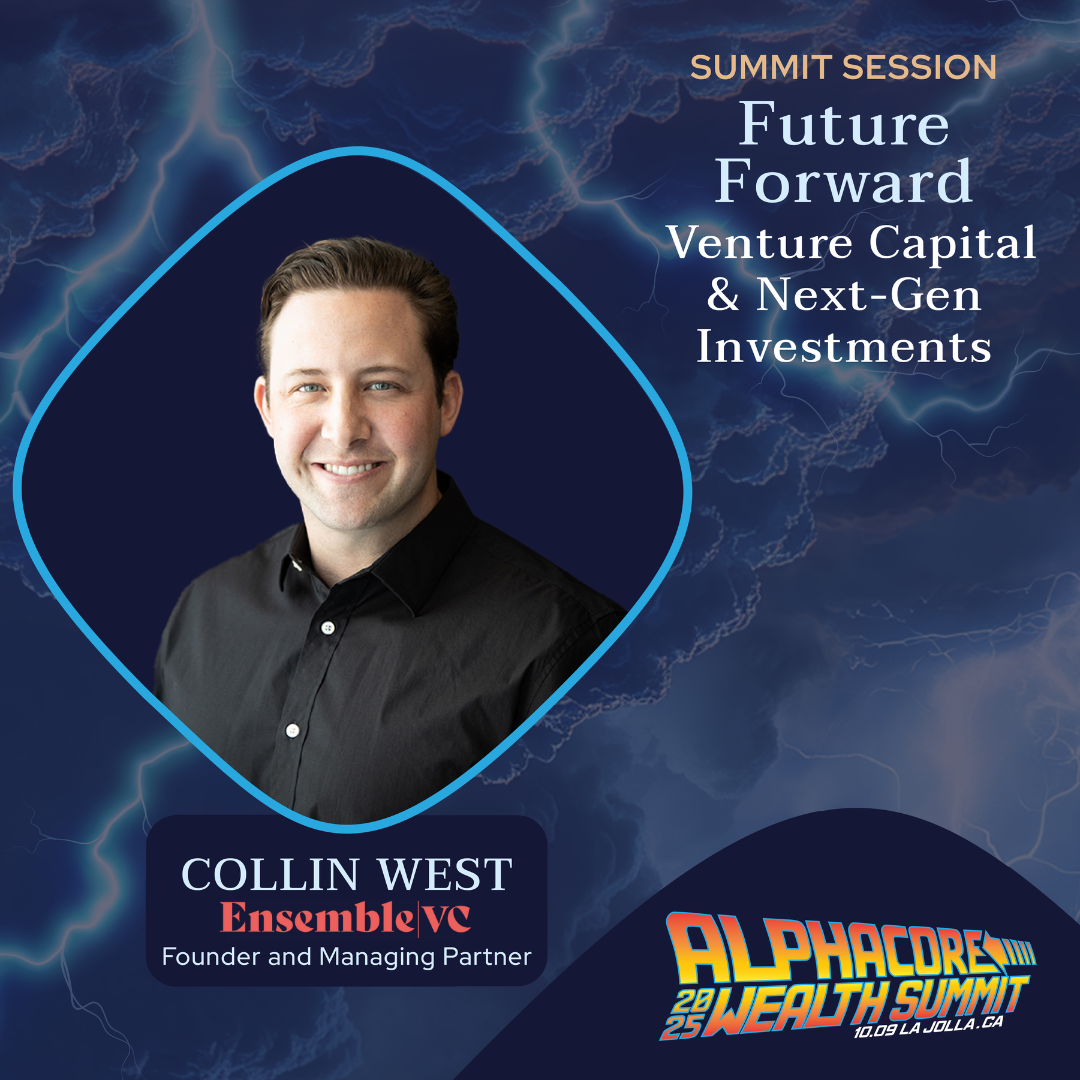The technology is already here. It’s your firm that needs an update.
Dr. Gopinath Sundaramurthy, Founder & Head of Data Science
Most venture firms are trying to become “data-driven” by upgrading the surface—new dashboards, more databases, better tooling. But what they haven’t realized is that the tools already exist to fundamentally rewire how investment firms operate––forever, from-the-ground-up, and for the better of markets, founders, investors, and users. The challenge is not about gaining access to the tech, but about adjusting your own human biases to accommodate the next generation workflow, which will soon be familiar to all.
Too many observers are focused on whether data or AI can make “the right decision.” That’s not the point. The real advantage is what happens before the decision: the thousands of lower-level assessments, filters, prioritizations, and nudges that shape what gets surfaced in the first place. In a well-designed system, those tasks are no longer handled by junior staff or buried in the noise of Slack threads. They’re handled by machines—at scale, around the clock, without fatigue or bias.

Ironically, the result is that humans can do more of what they’re actually good at.
As shown in the graphic, the shift is not so much about replacing judgment at the top as it is about reducing noise beneath it. What used to be 100% human, subjective work becomes a layered, machine-augmented process where context and signal are continuously generated in the background. The top-level decisions —allocating capital, backing founders, aligning the fund—are still made by people. But they’re made with more clarity, more context, and far less overhead.
This is the compounding advantage: the further along this curve a firm gets, the more it learns from its own activity, and the faster it improves. Firms that adopt early will grow farther and farther ahead of their peers—not because they’re “smarter,” but because they’re structured to learn faster.
The job of a modern VC is no longer to generate signal, but to shape the system that does. And the only firms that will thrive in this new era are the ones that understand that shift and design themselves accordingly.
So how do you justify the high expense and cultural shift associated with this data platform model? It pays for itself in the form of survival. Becoming a computationally aware firm—one that doesn’t just “use data,” but reorients around it—is the only way to keep up with the complexity of today’s venture market. In a world where every signal is digitized, every workflow tracked, and every opportunity hidden in plain sight, firms that stay reactive will fall behind. Those that invest in systemic foresight by building centralized data platforms will make better decisions, faster, with less wasted motion. The path to getting there is a series of steps that any firm can take, and each level makes the next one easier to reach.
Building a Truly Data-Oriented Firm: A Blueprint

Level 0: Traditional
Spreadsheets and ad hoc databases dominate. Deals are sourced through relationships, and decisions are made in meetings without structured input. Data is scattered, disconnected from daily workflows, and mostly retrospective. This is where most firms remain: comfortable, but limited.
Level 1: Data Edge
The first step forward is adding technical capability. A data scientist or engineer joins the team. Internal tools emerge—perhaps a founder scoring model or an automated sourcing pipeline. Yet the way the firm makes decisions is largely unchanged. The data informs conversations but doesn’t shape the process itself. Many firms plateau here because it feels like progress, but the operating model is still traditional.
Level 2: Process Edge
This is where data begins to define how the firm works. The sourcing funnel is tracked and prioritized systematically. Weekly reviews are built around standardized inputs and shared dashboards. The entire team operates from the same platform and language. Momentum compounds because decisions become faster, clearer, and easier to measure. This is also the point where cultural friction arises—tools only work if the organization is disciplined enough to use them consistently.
Level 3: Rebuild the Team
The workflows now highlight roles that no longer make sense. Analysts are replaced by automated sourcing and scoring. Hiring becomes focused on complementary capabilities, with engineers and investors shaping the roadmap together. The platform graduates from side-project to central organizational pillar of the firm.
Level 4: Strategic Collaboration
At the highest level, the platform extends beyond the walls of the firm. Elements of the system connect with co-investors, advisors, customers, and founders. Data flows in and out in real time, creating shared value across the network. The firm scales not by adding headcount, but by making every interaction smarter and more efficient.
Conclusion
We started our data journey with a focused goal: to find exceptional teams earlier than anyone else. To do that well, we knew we couldn’t rely on bolt-on tools or off-the-shelf analytics. We made the call early to invest deeply in infrastructure—custom systems, a world-class data team, and a firm-wide operating model that could turn information into real-time advantage.
What we discovered in the process is that our greatest achievements are not just technical, but organizational. For necessity’s sake, we oriented our firm around the flow of information, all the way down to minute-to-minute tracking of the way our team members interact with the platform.
The systems already exist. The hard part is shifting your mental model of how investment work gets done. Most firms still organize around static memos, siloed conversations, and linear workflows. But the firms that will lead this next era are the ones that understand what’s already possible—and build themselves to match it.
IPO Alert: Groww goes public!
Ensemble-backed Groww goes public on NSE-India at $8.9B valuation Groww, one of Ensemble VC’s earliest data-driven investments, completed a successful IPO on the NSE, marking a major milestone for India’s retail investing market. Backed at the Series A pre-revenue, Groww exemplifies Ensemble’s strategy in action — identifying world-class teams early through its proprietary Unity platform.
Collin West to headline AlphaCore Wealth Summit 2025 in La Jolla
We’re heading to La Jolla for the 2025 AlphaCore Wealth Advisory Summit!In one week, our team will be on the ground at the AlphaCore Wealth Summit, one of the industry’s most forward-looking gatherings for wealth managers, allocators, and innovators. This year’s theme — Back to the Future — sets the stage for a conversation about how artificial intelligence and emerging technologies are reshaping wealth creation and capital deployment. If you’ll be there, we’d love to connect in person.
Why Ensemble is Backing Stablecore’s Mission to Bring Community Banks into the Stablecoin Future
Ensemble is thrilled to announce our investment in Stablecore, the infrastructure platform enabling banks and credit unions to offer stablecoins, tokenized deposits, and other digital asset services.
Greetings from Ensemble's 2025 Summer Onsite
We’re writing from a packed house here at Ensemble’s Summer 2025 onsite — our largest ever.
Conrad Shang joins 'Venture with Grace' podcast to talk AI, Deep Tech, Healthcare, and the future of VC
In a recent interview with Grace Gong, Ensemble founding partner Conrad Shang explains how the firm’s AI-native infrastructure and software-first approach give it a competitive edge in winning deals and supporting founders. He highlights Ensemble’s long-term conviction in data-driven venture—built before it was fashionable—and how their proprietary tools like GTM 2.0 turn vague promises into tangible results. At its core, Ensemble believes that while data guides attention, it’s the people you surround yourself with who drive outcomes.



